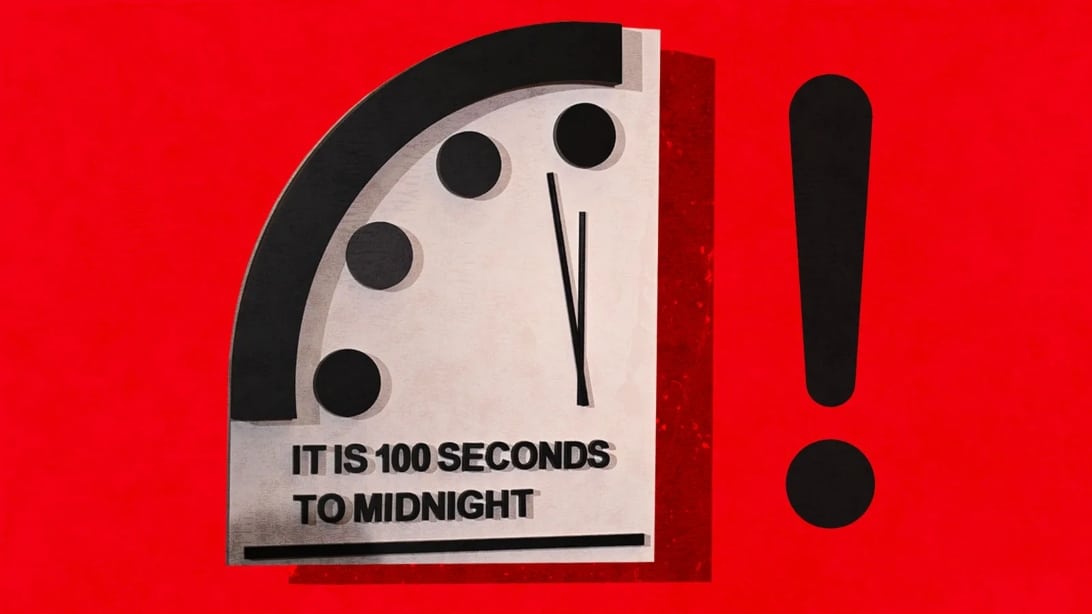High above the bustling streets of Chicago, a stark reminder of humanity's precarious existence hangs suspended called the Doomsday Clock.
The Doomsday Clock, a metaphor for the world's proximity to self-inflicted annihilation, stands at 90 seconds to midnight – the closest it has ever been in its 77-year history.
This chilling fact begs the question: what brought us to this point, and what can we do to turn back the hands of time?
From Cold War Chills to Modern-Day Threats:
Born in the shadow of the atomic bomb, the Doomsday Clock was the brainchild of scientists who helped develop the very weapon that threatened humanity's future.
In 1947, it stood at 7 minutes to midnight, reflecting the fear of nuclear war that gripped the world.
Through the Cold War years, the clock's hands fluctuated, inching closer in times of heightened tensions and retreating during periods of relative calm.
The fall of the Soviet Union brought a glimmer of hope, pushing the clock back to 17 minutes to midnight.
But the 21st century has proven to be its own Pandora's box, unleashing a new wave of existential threats.
Climate change, with its devastating floods, droughts, and extreme weather events, has become the most pressing concern.
Nuclear proliferation, fueled by geopolitical tensions, remains a hair-trigger away from catastrophe.
And the rise of cyber threats, capable of disrupting critical infrastructure and sowing chaos, adds another layer of vulnerability to our fragile world.
The Science Behind the Symbol:
The Doomsday Clock is not simply a doomsayer's prop. It's the culmination of meticulous analysis by the Bulletin of the Atomic Scientists, a non-profit organization composed of Nobel laureates and other experts in nuclear security and climate science.
Each year, the Bulletin convenes its Science and Security Board to assess the state of the world and decide whether to adjust the clock's position.
This year's decision, made in January 2024, reflected the escalating war in Ukraine and the increased risk of nuclear weapons being used, either intentionally or accidentally.
Beyond the Gloom: A Call to Action:
The Doomsday Clock is not a prophecy of doom; it's a stark warning.
It reminds us that our actions have consequences and that the choices we make today will determine the fate of generations to come.
But it's also a call to action. The clock's hands are not frozen in time; they can be pushed back.
The fight against climate change requires a global effort, a shift towards renewable energy sources and sustainable practices.
International cooperation is essential to de-escalate conflicts and prevent nuclear proliferation. Investing in cybersecurity measures can help mitigate the risks of cyberattacks.
But the fight for our future goes beyond policy and technology. It requires a change in mindset, a shift towards empathy and understanding.
We must break down the walls that divide us – whether based on nationality, religion, or ideology – and work together to build a more just and peaceful world.
The Doomsday Clock may be ticking, but it's not too late to change the course of history.
By understanding the threats we face and taking decisive action, we can push back the hands of time and create a future where midnight remains a distant possibility.
Let's not be remembered as the generation that fiddled while the world burned. Let's be the generation that turned the tide and built a brighter tomorrow.




















